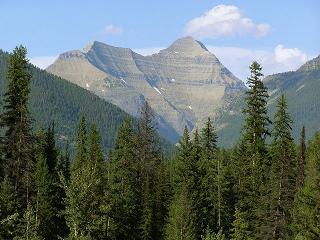

|
| Mount Stimson as seen from U.S. Route 2 to the southwest. |
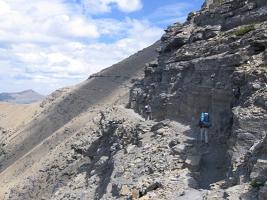
|
|
The traverse from Dawson Pass to Cut Bank Pass is very windy. |
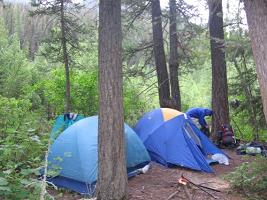
|
| camp the first night at Upper Nyack |
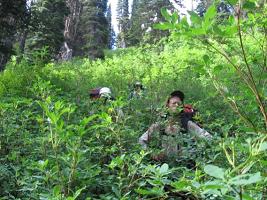
|
|
Adam during the bushwhack seems none too happy. |
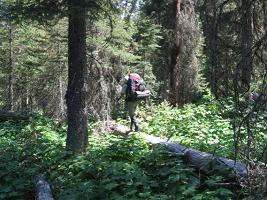
|
|
A log provides brief relief during the bushwhack - yet requires balance. |
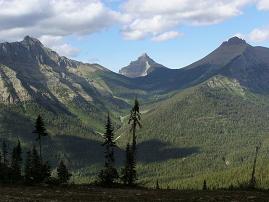
|
|
View northeast from high camp. Note the U-shaped terrain hallmarking glacial activity. |
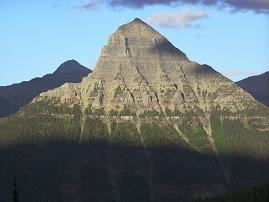
|
|
Tinkham Mountain from high camp. Note the multiple avalanche paths. |
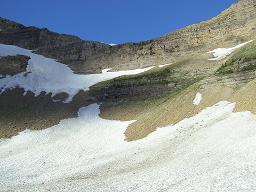
|
|
The Pinchot-Stimson col as seen during our approach. How do we get up there?? |
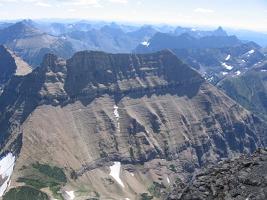
|
|
The steep and dangerous northwest face of Mount Pinchot. |
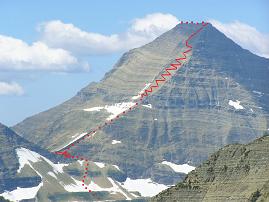
|
|
The Mount Stimson climbing route progressively steepens up the indicated ridge. Also note the tortuous cliff band passage prior to gaining the indicated saddle. (Mouse-click for a clearer view.) |
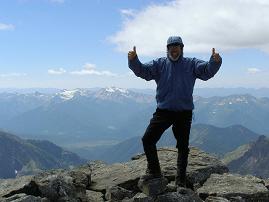
|
|
Bob Bolton at the summit. |
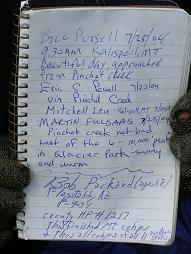
|
|
Bob Packard's summit register entry upon completing the western USA county highpoints. |
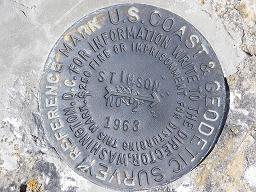
|
| summit benchmark |
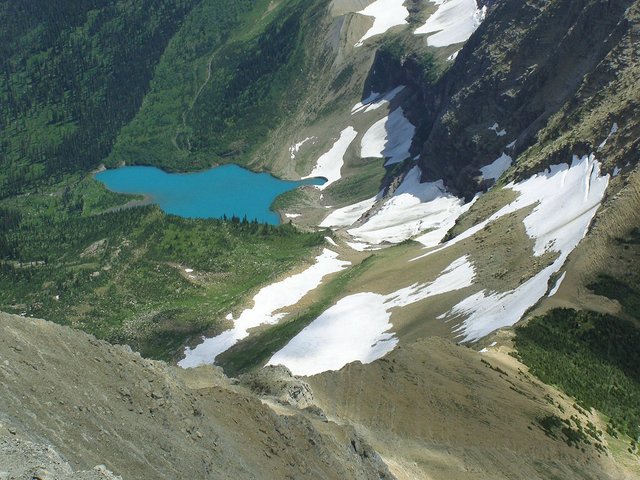
|
|
A view of the ridge that we must downclimb from Mount Stimson's summit. This lake's color captivates us while high on Mount Stimson. (Bob Bolton photograph) |
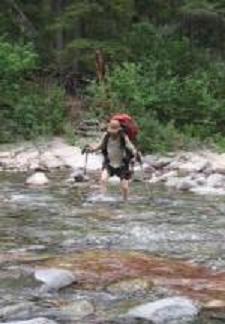
|
|
Adam crosses Nyack Creek during the descent from Mount Stimson high camp. |
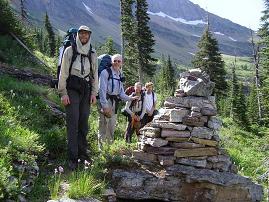
|
|
From viewer's left - Greg Slayden, Duane Gilliland, Adam Helman, Edward Earl. |
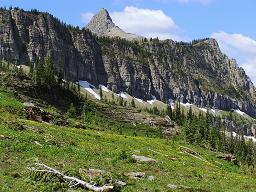
|
|
An idyllic view of high meadows with Tinkham Mountain prior to reaching Cut Bank Pass. |
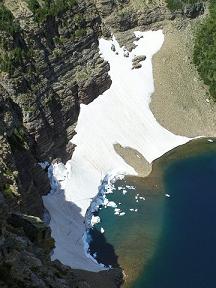
|
|
Snow bergs far below the Pitamakan Trail on the fifth, final day. |